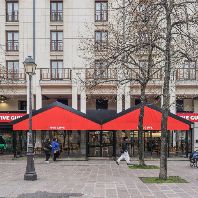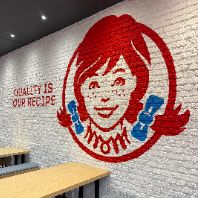In response to the trend toward smaller shopping centers and hybrid malls, GfK GeoMarketing evaluated 45 small German shopping centers in April 2011 with a sales area of 10,000 to 15,000 m². The results show that more than half of these shopping centers are failing.
To provide further insight, GfK GeoMarketing subsequently released a white paper that details the specific risks and opportunities associated with hybrid malls.
After examining the performance of around 220 shopping centers in 2010 and evaluating their various components, GfK GeoMarketing determined that the size of a shopping center as well as its conceptual design are among the most important success factors.
"The essential finding of the study was that retail real estate objects will fail if they are built too small or inexpensively," says Manual Jahn, retail real estate expert at GfK GeoMarketing and author of the white paper.
The evaluation of 220 centers revealed that the failure rate increases as the amount of rental space decreases. A recent study of 45 small shopping centers with a rental space of 10,000 to 15,000 m² showed that 58% are too small in order to successfully compete with nearby shopping venues (city centers, neighborhood centers, retail warehouses, shopping centers, etc.). The most common mistake among small shopping centers is too little space, which results in a lack of drawing power. This alone can cause a shopping center to fail.
Almost equally common are conceptual errors in the layout (63%) - i.e., the arrangement of the rental spaces within the structure. "A sound arrangement of rental space facilitates ease of flow through the object and a steady stream of customers in front of every shop," explains Jahn.
"Sometimes small centers are starter projects for less experienced developers, resulting in beginner's mistakes. These mistakes can be avoided with professional guidance - if not at the conceptual stage, then at the latest by the stage at which developers seek to attract foreign capital for the project development. Beyond the selling-on stage, it's often too late to correct these areas, as the project is already well advanced."
Even more common than the classic location-related mistakes (wrong location: 41%) is the error of building too many floors with retail usages (44%), followed by errors related to branch- and tenant mix (37%).
Hybrid malls - all hype or model for success?
In tracking shopping center openings in recent years, GfK GeoMarketing has determined that not only is the number of small malls in Germany increasing, but also the number of these shopping centers that fall into the category of "hybrid mall". In addition to having a rental space of approximately 10,000 to 15,000 m², hybrid malls are characterized by a combination of shopping center and retail warehouse elements.
Depending on local conditions and the specific goals of the developers, the characteristics of hybrid malls and the prominence of these characteristics can vary. GfK GeoMarketing has identified the following key recurring traits of hybrid malls:
After examining the performance of around 220 shopping centers in 2010 and evaluating their various components, GfK GeoMarketing determined that the size of a shopping center as well as its conceptual design are among the most important success factors.
"The essential finding of the study was that retail real estate objects will fail if they are built too small or inexpensively," says Manual Jahn, retail real estate expert at GfK GeoMarketing and author of the white paper.
The evaluation of 220 centers revealed that the failure rate increases as the amount of rental space decreases. A recent study of 45 small shopping centers with a rental space of 10,000 to 15,000 m² showed that 58% are too small in order to successfully compete with nearby shopping venues (city centers, neighborhood centers, retail warehouses, shopping centers, etc.). The most common mistake among small shopping centers is too little space, which results in a lack of drawing power. This alone can cause a shopping center to fail.
Almost equally common are conceptual errors in the layout (63%) - i.e., the arrangement of the rental spaces within the structure. "A sound arrangement of rental space facilitates ease of flow through the object and a steady stream of customers in front of every shop," explains Jahn.
"Sometimes small centers are starter projects for less experienced developers, resulting in beginner's mistakes. These mistakes can be avoided with professional guidance - if not at the conceptual stage, then at the latest by the stage at which developers seek to attract foreign capital for the project development. Beyond the selling-on stage, it's often too late to correct these areas, as the project is already well advanced."
Even more common than the classic location-related mistakes (wrong location: 41%) is the error of building too many floors with retail usages (44%), followed by errors related to branch- and tenant mix (37%).
Hybrid malls - all hype or model for success?
In tracking shopping center openings in recent years, GfK GeoMarketing has determined that not only is the number of small malls in Germany increasing, but also the number of these shopping centers that fall into the category of "hybrid mall". In addition to having a rental space of approximately 10,000 to 15,000 m², hybrid malls are characterized by a combination of shopping center and retail warehouse elements.
Depending on local conditions and the specific goals of the developers, the characteristics of hybrid malls and the prominence of these characteristics can vary. GfK GeoMarketing has identified the following key recurring traits of hybrid malls:
- Hybrid malls are more architecturally attractive compared to retail warehouses, whose constructio














